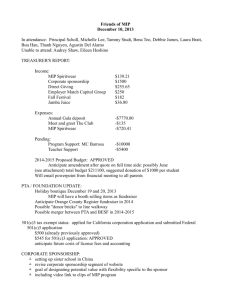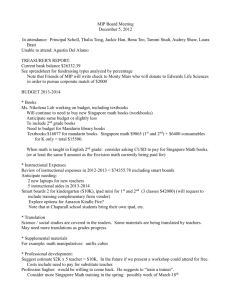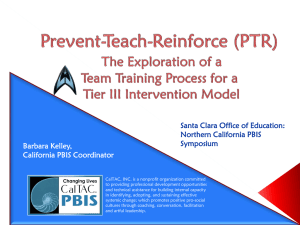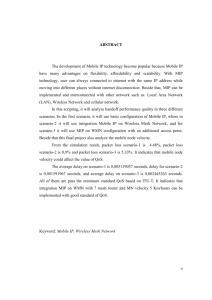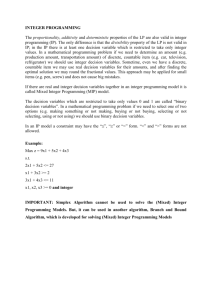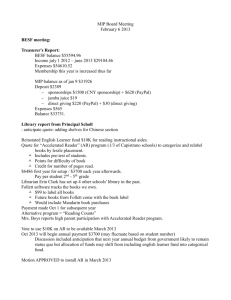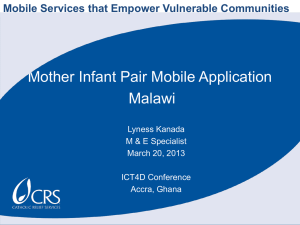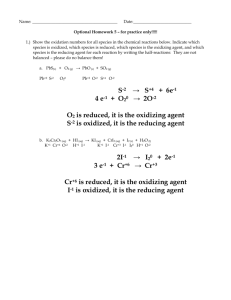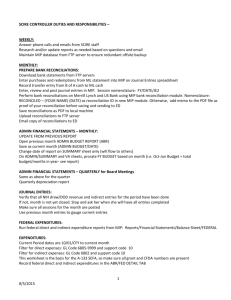Presentation
advertisement
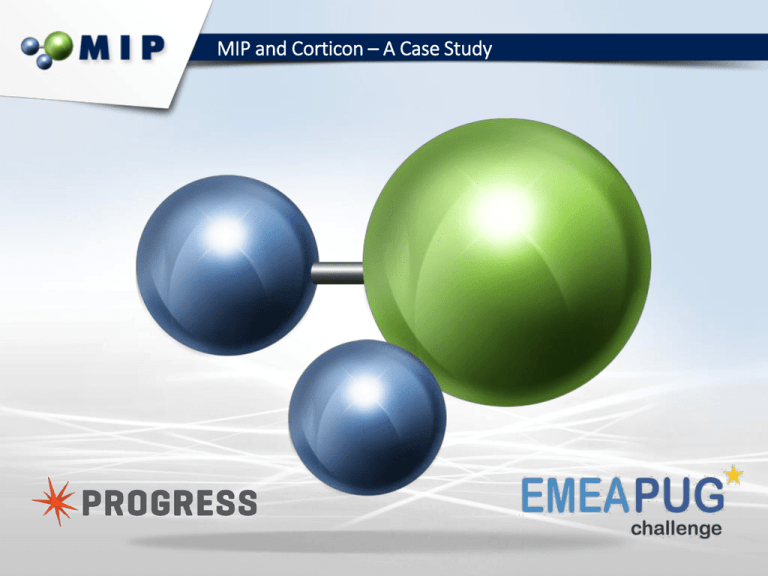
MIP and Corticon – A Case Study A little about the history of BRM • You’ve probable heard this, but lets be sure • Business Rules are those rules that tend to change a lot… • They change regularly, and they differ between customers • They cause all sorts of trouble: • Scope Creep due to unforeseen complexities • Bespoke Development due to customer uniqueness • “Brittle” Systems due to resulting complexity of the code • The evolution of logic technologies: • We used to write everything in code - it’s all we had • Then we discovered process, and BPM followed (80s-90s) • Then we discovered business rules, and BRM followed (2000s) Practical challenges implementing BRM • If it ain’t broke, don’t fix it • “But we already have flexible rules in the system” • “We already do most of that, why change now?” • “What’s the difference where the rules live?” • It takes time to get a feel for where this fits best • We’re still learning - Everyone is really • Especially challenging when you have a huge system with complex logic already built in by various means • The easiest place to tackle this would be in new projects • With careful analysis it is easier to separate: • • • System Logic Process Logic Business Rule Logic (step by step) Our Case Study – Redwood and mobicred • MIP saw an opportunity as we embarked on a new project • Using an existing administration platform • But facing demanding new requirements for rules in real-time • http://www.progress.com/~/media/Success%20Stories/Corticon-CaseStudy-Redwood-Group.pdf The challenge, the solution, and the benefits… CHALLENGE Develop a one-of-a-kind, online only revolving credit facility on behalf of a customer, being mobicred, that would compete directly with major credit cards like Visa and MasterCard and payment options like PayPal, although more retail aligned and mass market focused SOLUTION Selected the Integrated Lending System (ILS) from Progress partner MIP Holdings Pty Ltd. built on the Progress Corticon Business Rule Management System and Progress OpenEdge platform BENEFIT Accelerated its time to market, launching the new mobicred system in just 4 months, from proof of concept to deployment You want what now? • What we have: • MIP has the admin platform for Loans, including revolving Credit • MIP has BPM / Workflow capabilities • What’s the gap? • We needed to fully automate decision making that usually takes people and plenty of time in banking environments • Basic information validations (ID #, age, etc) • Risk assessment (including Credit rating based on history) • Affordability assessment • Produce an offer on facility amount and terms, based on risk • The decision and offer must be “immediate” (sub 5 sec) Building the solution… Building the solution… Only 0.2 seconds in Corticon. But this area is out of our control! Credit Rating Trans Union Corporate Payer Blacklist YES! We deliver responses in time - typically within 3 seconds. The results have been great! • Redwood have delivered solutions to other customers • This now runs at mobicred, Shoprite Checkers, Computicket, … • • • • • Shoprite process >1,500 applications per day, approval rate < 10% The customers can create their own risk assessment rules They can design, implement and test them (we do assist in cases) MIP system code is unaffected by differences in rules Change is in BPM and BRM only • We are now considering using Corticon for Projects at: • Sanlam, PMSA/Profmed, MSO, Legalwise, 1 Life (Auto&General) • Medical: Hospital pre-authorisations, claim payment, etc • Investment: Premiums, Risk Assessment, Benefit calculations, Future value estimations, etc. • Leads Campaigns: Prioritisation based on lead quality assessment Stories from the trenches • MIP did not do everything perfectly - far from it • We tried to tough it out – rather get some help • The interface can be picky • XML doc must have certain structural elements with the vocabulary (<WorkDocument>,<decisionServiceName>) • Some complaints about where to start – others found it OK • Errors can be a little cryptic • Don’t try to change project or vocabulary names – no refactoring • Get help to understand the returned XML doc structure • Get help from Progress, AIGS, or an experienced partner • Log/Record interaction times when 3rd parties are involved Stories from the trenches • Corticon is “stateless” – does not persist data • You can audit decisions, but it remains remote from your platform • MIP created the MIP Decision Service to assist: • • • • • • • • The Service handles service connectivity Decision templates control the nature of decisions available Each decision request is recorded in a DB table The decision is linked back to Application context Decisions can run sync, or be queued and run async (scheduled) Data is retrieved using a procedure triggered before the decision The response is recorded in the DB table Response handling using a procedure triggered after the decision MIP’s Decision Service … Synchronous Application Code Asynchronous Application Code Decision Service Decision Service Decision Table Job Scheduler Decision Table MIP and Corticon – A Case Study
